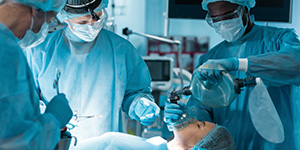Patient warming devices are essential for any surgical facility. They help manage patients’ core body temperature pre- and post-operative and enhance patient comfort. If a patient’s body temperature dips below 36°C, hypothermia can cause blood vessels to constrict, restricting blood flow to tissues and decreasing white blood cells needed to fight infection, often directly resulting in a surgical site infection (SSI). Aside from infection, failing to maintain normothermia can cause possible blood transfusions, longer hospital stays, increased healthcare costs, and a more complicated recovery all-around. In this blog, we’ll discuss key factors to consider when purchasing a patient warming device for your healthcare facility including cost, safety, patient comfort, and ease of use.
Cost
According to top clinicians, warming devices pay for themselves. While regular blankets need washing after every use and often require multiple to keep a patient warm, most warming devices come in sanitized packaging and can do the job alone. Warming devices not only cost less in the long term than their traditional counterparts, but they also have the potential to save money by reducing a patient’s hospital stay and risk of infection. When a patient is kept warm and cozy during surgery, recovery is smooth. Also significant are the human benefits of warming devices: patients report feeling more comfortable and at ease before surgery, helping assuage any pre-surgery anxiety and speed up recovery. Whether you ask clinicians or patients, warming devices are well worth their weight.
Safety
Safety is of paramount importance when selecting a patient warming device. Reduce the risk of cross contamination before, during, and after surgery with sterile and individually packaged warming blankets or suits. Look for a system with a dual-layer HEPA filtration system to improve filtration of contaminants, removing particles and impurities from the air. A ceramic heating element will minimize fire risk and provide efficient, consistent heat transfer.
Efficiency
According to experts, passive warming with cotton blankets is both inefficient and ineffective when it comes to patient warming. Ceramic heating elements offer quick and safe heat-up, operating at lower temperatures while providing consistent heat transfer. Devices with low volume air flow produce less noise, ensuring a less disruptive environment for patients, and reducing blanket loft while offering twice the warmth.
Patient Comfort
Patient comfort is at the center of why we use patient warming devices. Different types of warming blankets are available, including interoperative, postoperative, and underbody options. Choosing the right blanket type, size, and fit helps maintain a stable body temperature and ensures your patients remain warm, comfortable, and relaxed before and after surgery.
Ease of Use
A device with an intuitive user interface enables quick setup and adjustments based on preferred clinical setting. Look for devices with clear display screens that provide settings, warnings, and other relevant information. When deciding on a patient warming device, it’s crucial to consider cost, safety, efficiency, patient comfort, and ease of use. Each of these factors contributes to delivering optimal care to patients.
At SourceMark, we are proud to offer the KoZee Patient Warming System. Designed with comfort in mind, the KoZee system allows clinicians to safely and easily achieve and maintain normothermia during surgery.
The KoZee has a wide array of blankets to address every phase in the peri-op cycle, including pre-op suits, intra-op upper and lower blankets and underbody options, as well as the larger post-op blankets, which are almost the size of a twin quilt at 87 inches long and 47 inches wide.
Worlds away from a traditional blanket, the KoZee system features an intuitive, user-friendly interface for temperature and airflow control at the touch of a button. The interface also tracks and monitors the hours of use for HEPA filters, with each one viable for 500 hours. When that time is reached, the system alerts the user to change the filter. Clinicians typically call in BioMed technicians to assist with this kind of task, but the KoZee filters are easy to change, allowing for maximal efficiency and no-hassle maintenance.
Every year, millions of patients suffer from preventable infections. KoZee patient warming systems are on the frontlines of fighting SSIs, stopping hypothermia in its tracks and ensuring patients stay cozy. As a leader in advanced convective warming, KoZee systems offer sterile packaging, dual-layer HEPA filtration, ceramic heating elements, and temperature and airflow control from the same user interface. KoZee provides clinicians with a safe, easy, and cost-effective way to achieve and maintain normothermia, avoiding long recoveries and ensuring the best patient outcomes possible.
Discover how to keep your patients warm and KoZee in the perioperative environment.
We’re ready to help deliver positive patient experiences and better clinical outcomes. Get in touch with us for more information about the KoZee Patient Warming System or our other innovative solutions.









